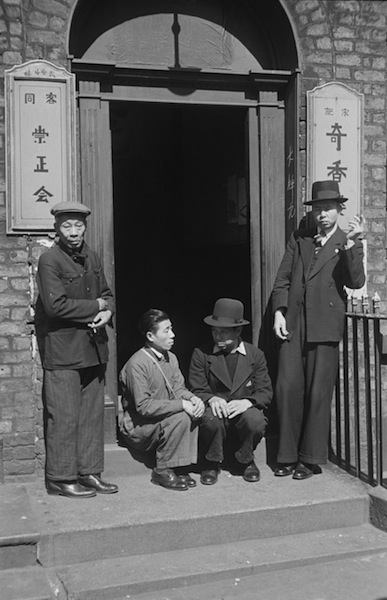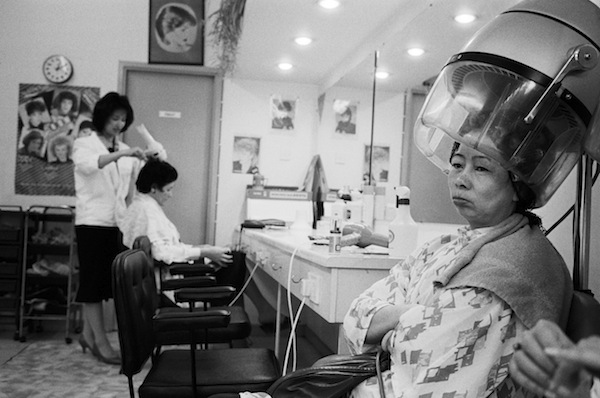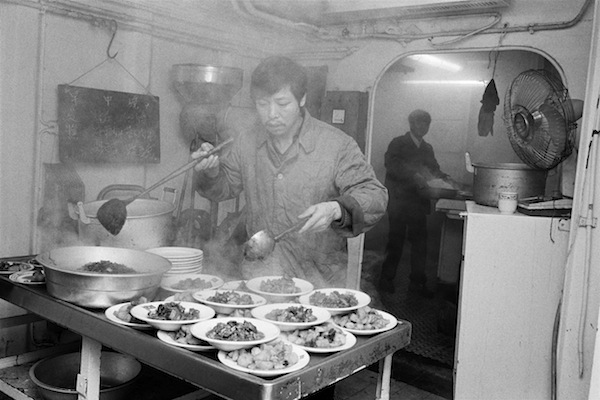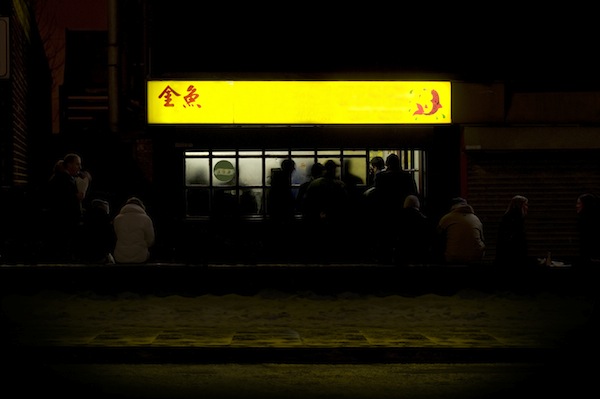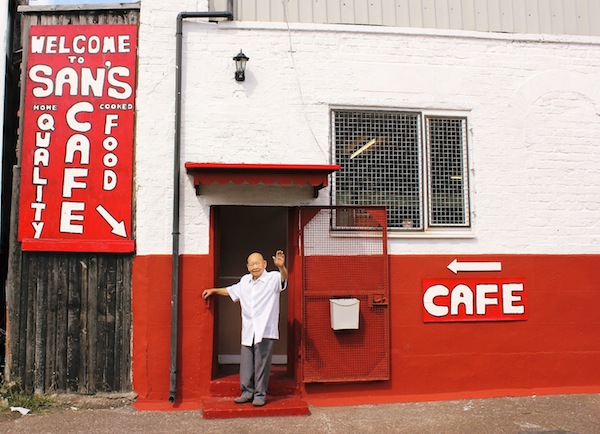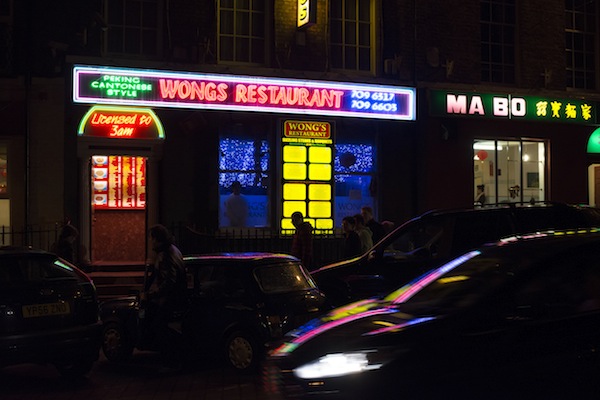Ebb an Flow: A Visual Chronicle of the Changes within Liverpool's Chinatown. Open-Eye, Liverpool
Ebb and Flow takes the visitor on a selected zoom through the history of photographers enduring interest in Liverpool’s Chinatown and the communities that are connected to it. Liverpool established the first Chinatown in Europe in the 1860's and today there are more than 10,000 Chinese residents living in the city and its surrounding areas.
The exhibition mines Open-Eye’s large print archive for roughly half of the exhibition but opens with a new 2014 commission from London-based photographer Jamie Lau. Lau was invited to make a new body of work based on his impressions of Liverpool's Chinatown, an area he had no prior experience or knowledge of. The resulting images convey a sense of isolation. They are often taken at night in a semi-creeping observational style. The isolation is Lau’s own with the images feeling like they are still a little wary of their subject matter. They capture facades and peep within, not quite confident enough to walk through the door. Windows of takeaways and restaurants, staff and punters are captured waiting for their order or in mid-bite. Detail is captured on signs (‘No Dogs. No Bikes’ on the door of the English Takeaway) or advertising (Holland’s Pies ‘As Tasty as Ever’), look closer and more layers of information are revealed. One man eats a late night dinner, his partners head amusingly obscured by a large roast duck. In another image. a waiter stands in silhouette at the window of the Peking Cantonese style Wong’s Restaurant lit up like a sparkling blue disco ball. He stares out into the streets. Perhaps it's a slow night, but we can’t see his face to know his true thoughts.
The photographs taken in daytime or dusk have a different and, perhaps, more successful quality displaying a sense of Lau’s photographic confidence. Lau captures the dazzling brilliance of light shining off supermarket shutters or the deep shadow of sunset as it envelopes Chinese dragons. They have a pensive atmospheric mood and a slower quality. Tendencies of light, times of day, are observed over time and then captured as opposed to the apparent quickness of the Takeaway shots. Shoot then run.
The second gallery presents another contemporary work from Liverpool-based duo ‘The Sound Agents’ (John Campbell and Moira Kenny). The two received Heritage Lottery Funding to create an audio-visual archive of Chinatown titled 'Liverpool Chinatown Oral History'. Interviews with locals and former residents play on a loop within the space alongside two cases with archival material like identity cards, alien stamp books, passports and photographs. The Sound Agents share this gallery with black and white and colour prints from Martin Parr who was commissioned by Open Eye in 1986 to document the connections between the cities of Liverpool and Manchester. He chose to focus on the two cities Chinese communities and, particularly, the daily life of the people who belong to them. Gatherings, social occasions, shopping and playing are the true focus. The colour shots are a little jollier and tend towards the older generation; a plump old couple sit together in their living room, a group of older ladies play Mahjong, two older gentlemen mind their shop which appears to sell only cheap crisps and sweets. Their heads pop up from the sea of quavers, space raiders and 15p Golden Wonder. Amongst the black and white images a woman sits crossly, arms folded, pouting underneath a dryer at a hair salon on Berry Street, it’s unclear what’s pissed her off – perhaps Parr himself. There are fewer images of the younger generation but one, in a dance hall, shows a group dancing in a nightclub. A girl, a little spaced out and lost in the music, wears a black t-shirt emblazoned with the word ‘NOIR’. Although several boys dance with her, she seems to dance alone in contrast to the groups of people playing or talking in other images.
The upstairs gallery is devoted to Bert Hardy (1913-1995), the prolific press photographer best known for his work with Picture Post (1941-57). The selection focuses on the Chinese seamen based in the city during WW2. Picture Post did not publish any of the images Hardy took of the seamen. To do so would have been damaging due to the poor living conditions they reveal and, of course, there was the looming crisis of the war and a push to keep up the country’s morale. This is a man’s world. The crew are captured eating, washing, cooking and smoking during their shore leave but this does not seem like much of a holiday. The men are packed into hostels or Seaman’s boarding houses, sharing bunks, washing in what look like horse troughs wearing raggedy towels. A huge amount of detail is captured in these images of their sleeping quarters, calendars showing pretty women, endless dirty mugs and bit of food. It’s pretty grim but thankfully there is some reprieve when out on the streets. We see the men smiling and joking in groups around town and outside Ale Houses. There is, however, the constant backdrop of conflict. One of the most interesting photographs weaves these narratives together as if it were a tableau; a group of men mill about on the street looking like gangsters in their suits, hats and long coats but they are not the real subject of this composition. In the foreground a British girl stands stricken by a shop front, her face a picture of misery. She stands on a shop cellar door and her abjection seems to ask it to open up and swallow her whole. In the background a Ballast Balloon lies like a giant whale on the road. This is an image to return to again and again.
Ebb and Flow runs at Open-Eye, Liverpool, until 22 June. Free Entry.
http://www.openeye.org.uk/main-exhibition/ebb-and-flow-a-visual-chronicle-of-the-changes-within-liverpools-chinatown
NOTES:
A comprehensive and illustrated pdf of a lecture given by Gregory Lee, Professor of Chinese Studies at The University of Lyon at Open-Eye in 2008 can be found here
http://halshs.archives-ouvertes.fr/docs/00/32/25/32/PDF/Bert_Hardy_s_Chinatown_Illustrated_Lecture.pdf
(An shorter version of this article appeared in the June print edition of The Skinny North West)

